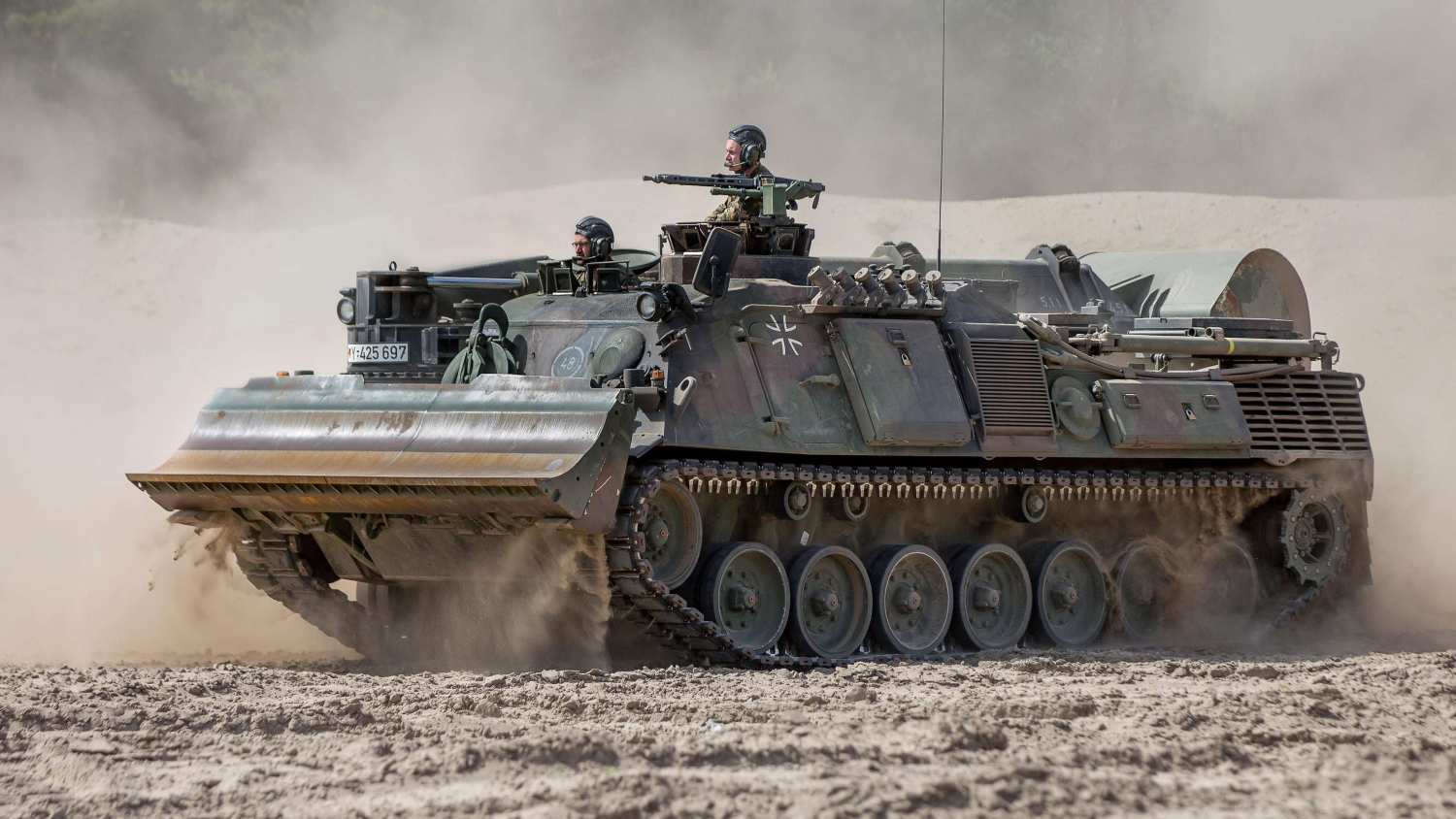The Ukrainian armed forces are soon expected to transition from defense to offense when they commence their much-anticipated counteroffensive in the spring or summer, during which they will have to undertake the most dangerous task of land warfare, called ‘breaching.’
Breaching involves creating a hole in the adversary’s defensive positions, either mechanically or with the help of explosives, and at the core of this effort are specialized armored engineering vehicles (AEVs).
As the Ukrainian forces move deeper into the Russian-occupied regions in eastern and southern Ukraine, they will encounter a terrain sown with landmines, trenches, and berms built by the Russian military.
The attacking Ukrainian forces will first have to clear the minefields, fill or bridge the trenches and demolish earthen berms (ridges), all while getting fired upon by the well-entrenched Russian forces.
In the words of a former Army Engineer Officer, who goes by the moniker, ‘Angry Staff Officer,’ “it (breaching) is at once the single most dangerous point of the battlefield while also being the most decisive.”
This is because to breach an enemy’s defensive lines is to bring them within reach, where an attacking force can now engage closely with them and destroy their forces. However, while doing so, the attacking troops expose themselves to serious vulnerability.
Let us see this with some examples of AEVs provided by Kyiv’s Western partners, among which the ex-German Pionierpanzer 2A1 Dachs should figure prominently. They are the most abundant breaching vehicles in the Ukrainian service.
The Pionierpanzer 2A1 Dachs
The Pionierpanzer 2A1 Dachs is a medium, fully tracked armored vehicle capable of performing earth-moving, engineering (welding and cutting), obstacle breaching, and obstacle construction operations on the battlefield.
In a breaching operation, first is suppression of the enemy fire, which could be done by using the main battle tanks (MBTs) or infantry fighting vehicles (IFVs) to allow the AEVs to reach the point of the breach – a minefield or a trench, or a berm.

Let us consider an example of a trench adjoining a berm, which is usually the case, as digging a trench provides the soil from which the berm is constructed, and these berms form an obstacle for armored vehicles. The ease with which these berms can be constructed means they can be built hundreds or thousands of kilometers long.
Such a scenario has been portrayed in a promotional video from Rheinmetall, featuring a Pionierpanzer 3 Kodiak, the successor of the Dachs, performing a breach; however, even the Dachs would be expected to perform a breach the same way.
Just like the Kodiak does in the video, even the Dachs could use its front-mounted plow to shovel earth into the trench to create a stable platform, for it to dig a hole in the adjacent berm, then using its excavator bucket and drop the dirt from the berm into the trench to complete its bridge which it started building with its plow.
Military commentators suggest that the Dachs should take around three minutes to perform this task, after which the breach is open for the MBTs to pass through into the enemy’s rear area.
Now, during this span of three minutes, the enemy’s guns and missile launchers can fire upon the Dachs if the MBTs it supports fail to suppress the enemy, and the Dachs might get destroyed, which would result in the failure of the breaching operation.
The failure of the first attempt at breaching could decisively impact the entire offensive operation because the Russian reinforcements would now bear down upon any attempted breach after that.

Norwegian NM189 Ingeniørpanservogn AEVs
Besides the Dachs, Ukrainians have also received a pair of NM189 Ingeniørpanservogn armored engineering vehicles from Norway. It is quite interesting, as it comes with a mine-clearing line charge, dozer, and excavator, making it an all-in-one breaching vehicle.
So, unlike the Dachs, which would rely on a mine-clearing vehicle to first breach a minefield adjoining a trench or a berm, the NM189 can clear a path through a minefield, plow dirt into a trench to build a temporary dirt bridge for digging a hole into the berm using its excavator.
Also, the NM189 is armed with a 12.7-millimeter machine gun, so as the driver bulldozes, the commander can operate the machine gun and aid the MBTs and other fighter vehicles in suppressing the enemy fire.

The NM189 was developed based on the Leopard 1 tank in 1995 for the Norwegian Army. It acquired 22 NM189s through 2001 for the engineer battalion in its Brigade Nord, the Norwegian Army’s sole armored formation.
In a 2016 exercise with the US Marine Corps (USMC), the Norwegian army engineers demonstrated a breach using NM189s supported by USMC M-1 tanks and wheeled fighting vehicles. The breach entailed a pair of NM189s and a Marine Assault Breacher busting an anti-tank trench and berm.
The NM189s covered each other with their machine guns as they took turns to doze the dirt into the trench and then excavate the berm, after which marine tanks and fighting vehicles could pass through.
The Ukrainian brigade that gets its hands on the two NM189s donated from Norway could perform a breach similarly.
- Contact the author at tanmaykadam700@gmail.com
- Follow EurAsian Times on Google News




